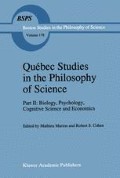Abstract
What I call a nominalistic analysis of belief-sentences is an explication of the meaning of sentences of the form ‘A believes that p’ that does not commit the analyst to the existence of special abstract entities such as sets, Fregean senses and propositions, or universal properties and relations. I take it, without discussing the point here, that if it is feasible, such an analysis is prima facie philosophically preferable to a realistic one for general reasons of clarity and ontological economy. But the question, of course, is: is it, in some reasonable way, feasible? Standard nominalistic approaches to belief-sentences all face well-known and crucial difficulties. The quotational theory, according to which the object-sentence ‘p’ is quoted or mentioned within the belief- sentence ‘A believes that p’, fails the Langford-Church translation test.1 The metalinguistic analysis, on the other hand, according to which the ‘that’-clause within the belief-sentence is, in every case, a primitive metalinguistic predicate fails to satisfy Davidson’s learnability requirement.2 And Davidson’s own approach, the so-called paratactic theory, according to which ‘A believes that p’ means simply ‘A believes this, p’ fails, for all its virtues, to accommodate some important illocutionary and logical characteristics of belief- sentences.3 These negative results from the last four or five decades of debates led more than one phi-losopher to conclude drastically that nominalism just can’t cope with belief-sentences in any satisfactory way. What I would like to show here is that there is still at least one more line of investigation for nominalism in this endeavour. Space being severely limited, I will be content to sketch the general features of this hitherto unexplored approach and to list some of the motivations for it as well as some of its theoretical advantages.
This paper stems from a research project supported by the Canadian Social Sciences and Humanities Research Council and by Quebec’s FCAR Fund, both of which I want to express my gratitude to. Thanks are also due to Élizabeth Karger, Grzegorz Malinowski, François Récanati, Philippe de Rouilhan, and Daniel Vanderveken for helpful remarks and criticisms on a previous version of the paper.
Access this chapter
Tax calculation will be finalised at checkout
Purchases are for personal use only
Preview
Unable to display preview. Download preview PDF.
Notes
On the Langford-Church translation test and its critical application to quotational approaches of belief-sentences, see Alonzo Church, ‘On Carnap’s analysis of statements of assertion and belief’, Analysis 10 (1950), 97–99.
The metalinguistic approach to belief-sentences has been proposed by Israel Scheffler in ‘An inscriptional approach to indirect quotation’, Analysis 14 (1954), 83–90. For its criticism from the point of view of the learnability requirement, see George Bealer, Quality and Concept (Oxford, Clarendon Press, 1982), 28–29.
The paratactic account has first been proposed by Donald Davidson as a theory of indirect contexts in ‘On saying that’, Synthese 19 (1968), 130–146 (reprinted in the author’s collection of essays Inquiries into Truth and Interpretation, Oxford, Clarendon Press, 1984, 93–108). It has been extensively discussed since then, for example, by J. A. Foster in ‘Meaning and truth theory’ (in Truth and Meaning, ed. by G. Evans and J. McDowell, Oxford, Clarendon Press, 1976, 1–32), Brian Loar in ‘Two theories of meaning’ (also in Truth and Meaning, 138–161), and Stephen Schiffer in chapter 5 of Remnants of Meaning (Cambridge, Mass, The MIT Press, 1987, 111–138). It seems that the theory cannot without importantly being revised account for typical logical phenomena such as quantification from the outside in indirect contexts (think of a sentence such as ‘Galileo said of a certain person that she baked terrific lasagna’, an example adduced by Schiffer in Remnants of Meaning, p. 125), or the embedding of a ‘that’-clause into another one (‘Laplace said that Galileo said that the earth moves’, another example from Schiffer’s book, p. 132). The theory, though, has many extremely interesting features which I will try to recapture in my own approach.
See Rudolf Carnap, Meaning and Necessity, 2nd ed., Chicago, The University of Chicago Press, 1956, 56–59.
See David Kaplan, ‘On the logic of demonstratives’, Journal of Philosophical Logic 8 (1978), 81–98.
Stephen Stich, for example, has forcefully insisted upon the impreciseness of the conditions of accuracy for belief-reports in From Folk Psychology to Cognitive Science. The Case Against Belief Cambridge, Mass., The MIT Press, 1983.
See, for example, G. Bealer, Quality and Concept, Oxford, Clarendon Press, 1982, 23–25; and S. Schiffer, ‘Belief ascription’, Journal of Philosophy 89, 10, Oct. 1992, 504–505.
Author information
Authors and Affiliations
Editor information
Editors and Affiliations
Rights and permissions
Copyright information
© 1996 Kluwer Academic Publishers
About this chapter
Cite this chapter
Panaccio, C. (1996). Belief-Sentences: Outline of a Nominalistic Approach. In: Marion, M., Cohen, R.S. (eds) Québec Studies in the Philosophy of Science. Boston Studies in the Philosophy of Science, vol 178. Springer, Dordrecht. https://doi.org/10.1007/978-94-009-0113-1_16
Download citation
DOI: https://doi.org/10.1007/978-94-009-0113-1_16
Publisher Name: Springer, Dordrecht
Print ISBN: 978-94-010-6537-5
Online ISBN: 978-94-009-0113-1
eBook Packages: Springer Book Archive

